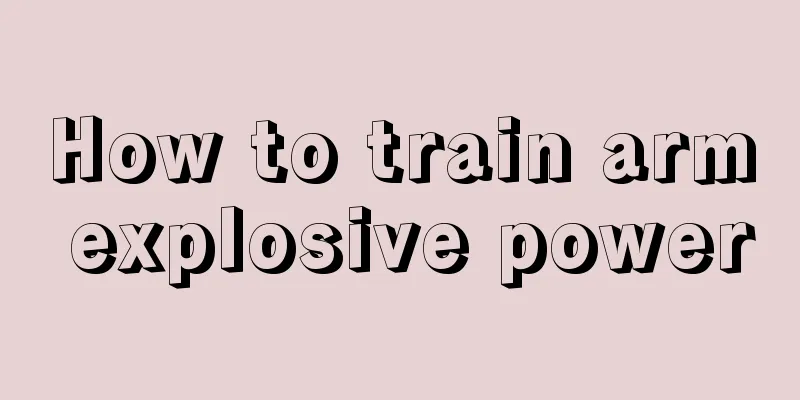Why do I feel pain in my thigh after running?

|
Running is a form of exercise that modern people like very much, and it is indeed a very healthy sport. Many people, no matter how busy they are at work, will take time out to go out for a run. After all, health is the most important thing. However, if you are not adequately prepared, muscle strain is likely to occur. In addition, some people feel pain in the thigh root after running. Why is this? Reasons for thigh muscle soreness after running: One type of pain is that it occurs immediately after exercise, but disappears quickly. This type is called acute muscle soreness. The other type occurs a few hours or overnight after exercise, accompanied by fatigue, and even muscle cramps and stiffness. This type of muscle pain disappears relatively slowly, and it often takes 3 to 4 days or even 6 to 7 days to fully recover. This symptom is called delayed muscle soreness or post-exercise fatigue. The muscle soreness we often talk about mainly refers to the latter type, namely delayed onset muscle soreness. There is a clear difference between muscle soreness and a strain. In fact, muscle soreness is a normal and positive physiological phenomenon. People often experience obvious muscle soreness and discomfort after strength training or an exercise that they are not used to (such as high intensity of exercise or a new sport). These symptoms will disappear naturally after a period of rest, and when the same exercise is performed again, the muscle soreness symptoms will be significantly reduced or will not occur. However, muscle strain caused by exercise is different. Muscle or ligament strain can cause large-area pathological changes in skeletal muscle, such as cell degeneration, cell necrosis, etc., which not only affects continued exercise or training, but may also bring more serious consequences. Self-identification of strains and muscle soreness Muscle and ligament strains occur suddenly due to an damaging movement, while muscle soreness gradually worsens. There is a way to distinguish between the two: muscle soreness can be relieved by stretching, but if it is a sports injury, stretching will make the pain worse. In short, muscle soreness after exercise and muscle (or ligament) damage are completely different in nature. Muscle soreness can be relieved by rest, stretching, massage, etc. Muscle (or ligament) injuries must be solved by medical means. |
<<: Can the ab wheel reduce belly fat?
>>: Calf muscle pain after running
Recommend
Is there any yoga for weight loss?
Many women are usually worried about losing weigh...
The most effective abdominal muscle exercise
It is easier to train the abdominal muscles than ...
How to train your arms with dumbbells
I think there must be many female friends who pre...
What are the ligament stretching exercises?
Ligament stretching is very necessary, and it can...
Special effect sit-ups effectively achieve abdominal weight loss goals
Focus on abdominal weight loss A lot of obesity s...
How to do aerobics to lose belly fat?
Many girls are worried about the fat on their bel...
Barbell Bench Press
Barbells are something that many people know abou...
Can sit-ups reduce belly fat? Can sit-ups reduce belly fat?
What is the most effective way to lose belly fat?...
How to reduce belly fat
Losing weight is a topic that many people are con...
What is the effect of honey, black tea and ginger weight loss method
Drinking black tea can effectively eliminate free...
What are some breathing exercises?
Many people are afraid of exercise, especially wh...
Will jogging make your calves thicker?
Running is a very good sport, but it is also a ma...
Is it good to exercise before bed?
Everyone knows that fitness can not only maintain...
How to do medical fitness exercises for the middle-aged and elderly
Middle-aged and elderly people also need health c...
How to warm up for exercise?
How should we warm up every time we exercise? If ...









